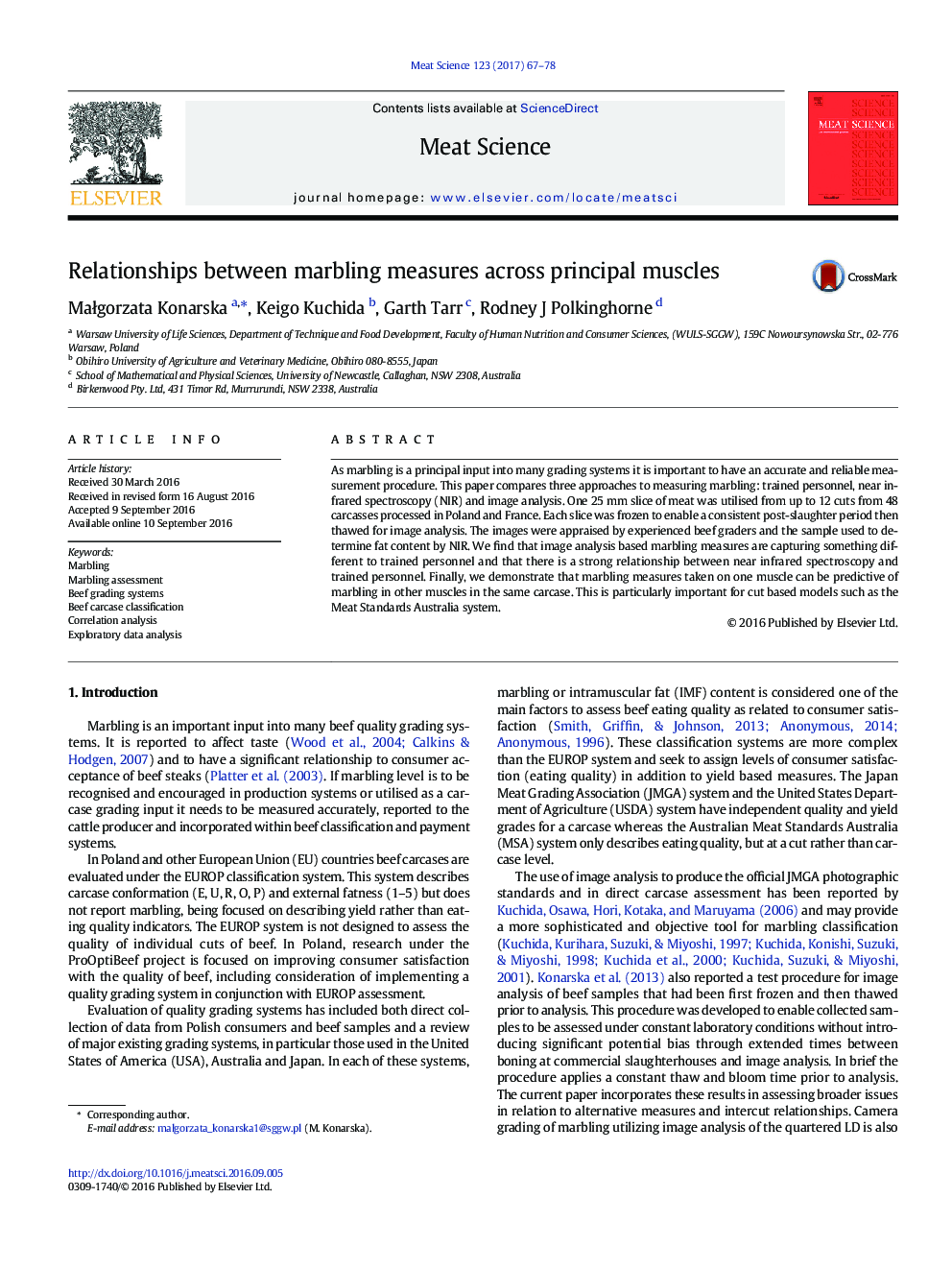| Article ID | Journal | Published Year | Pages | File Type |
|---|---|---|---|---|
| 8503276 | Meat Science | 2017 | 12 Pages |
Abstract
As marbling is a principal input into many grading systems it is important to have an accurate and reliable measurement procedure. This paper compares three approaches to measuring marbling: trained personnel, near infrared spectroscopy (NIR) and image analysis. One 25Â mm slice of meat was utilised from up to 12 cuts from 48 carcasses processed in Poland and France. Each slice was frozen to enable a consistent post-slaughter period then thawed for image analysis. The images were appraised by experienced beef graders and the sample used to determine fat content by NIR. We find that image analysis based marbling measures are capturing something different to trained personnel and that there is a strong relationship between near infrared spectroscopy and trained personnel. Finally, we demonstrate that marbling measures taken on one muscle can be predictive of marbling in other muscles in the same carcase. This is particularly important for cut based models such as the Meat Standards Australia system.
Related Topics
Life Sciences
Agricultural and Biological Sciences
Food Science
Authors
MaÅgorzata Konarska, Keigo Kuchida, Garth Tarr, Rodney J Polkinghorne,
